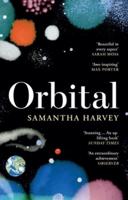Publisher's Synopsis
This historic book may have numerous typos and missing text. Purchasers can usually download a free scanned copy of the original book (without typos) from the publisher. Not indexed. Not illustrated. 1917 edition. Excerpt: ... GOOD FRIDAY AND EASTER (Various dates, usually in April) Spring bursts to-day, For Christ is risen and all the earth's at play. Flash forth, thou Sun. The rain is over and gone, its work is done. Winter is past, Sweet Spring is come at last, is come at last. Bud, Fig and Vine, Bud, Olive, fat with fruit and oil and wine. Break forth this morn In roses, thou but yesterday a thorn. Uplift thy head, O pure white Lily through the Winter dead. Beside your dams Leap and rejoice, you merry-making Lambs. All hearts and flocks Rejoice, all beasts of thickets and of rocks. Sing, Creatures, sing, Angels and Men and Birds and everything! Christina G. Rossetti. GOOD FRIDAY AND EASTER These two holy days of the Church are so closely connected that we can well consider them together. The first of the days celebrates, as you know, the death of Christ, and the second His resurrection. Good Friday is the sixth day of what is culled Holy Week, and is the end of that week as well as of the lenten season. In the life of Christ this was the week of the momentous closing events. He rode into Jerusalem on the preceding Sunday (Palm Sunday) while the people strewed palms and branches of trees in his path. Then followed in rapid succession his betrayal by Judas, his trial, and his crucifixion, the last taking place on what is now known as Good Friday. In the early days of the Church, Good Friday was a day of strict fasting and penance. It was a solemn preparation for Easter, and was called the Festival of the Crucifixion, and the Day of Salvation. The church service was of the simplest. The usual chants and praises were omitted, and no music was allowed but of the most plaintive description. No bell was rung for worship. No one bowed the knee in prayer, because...























